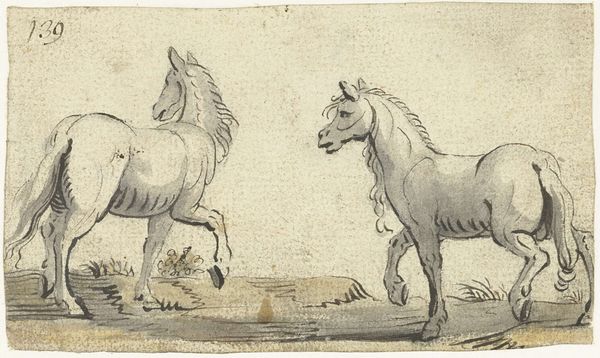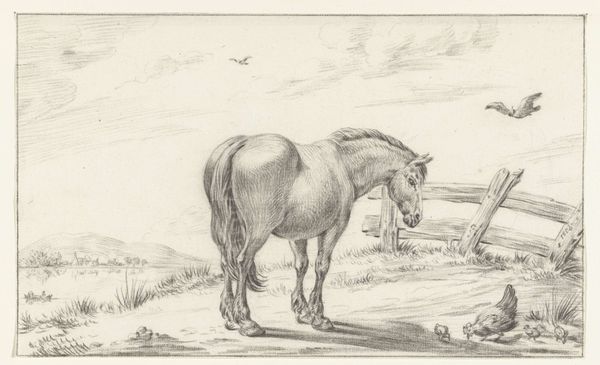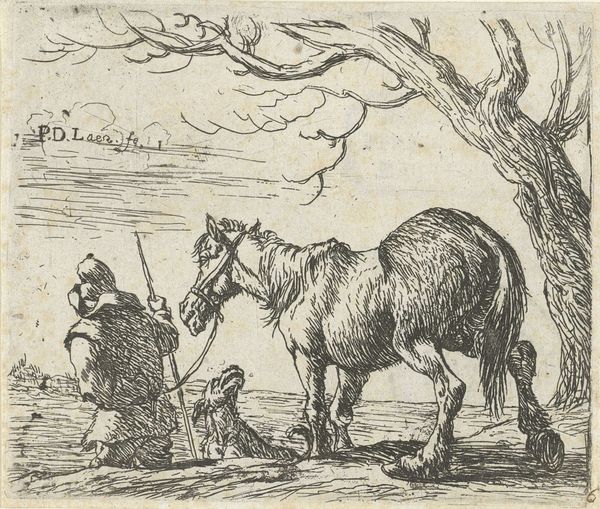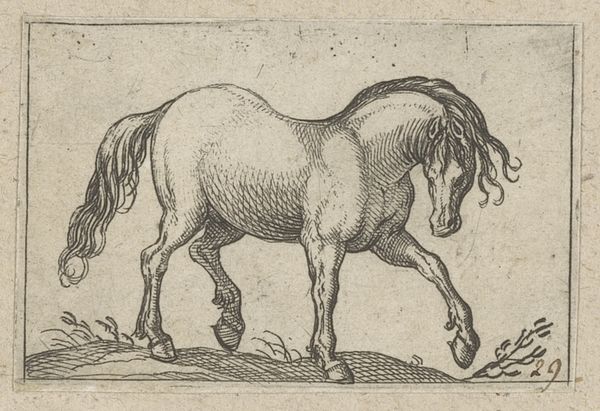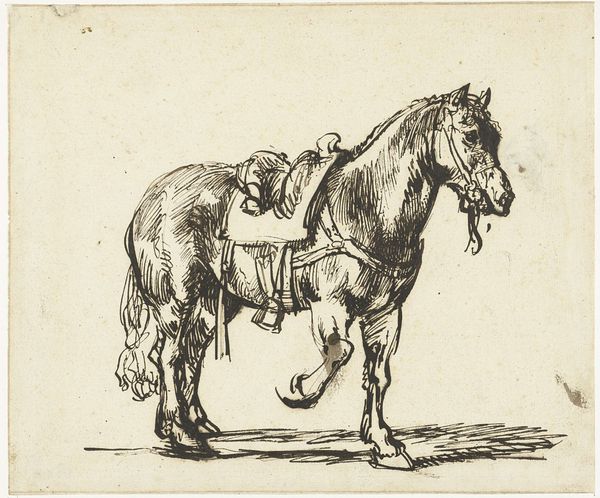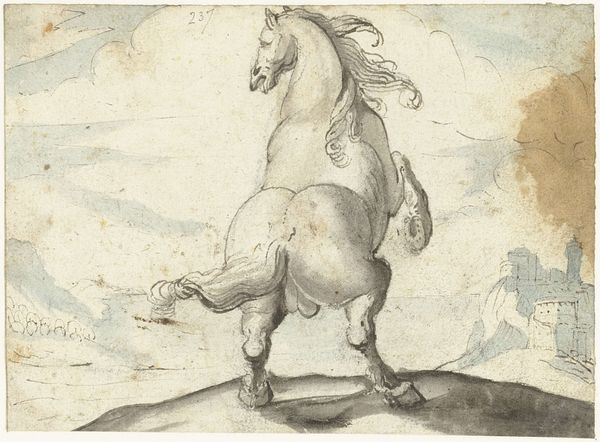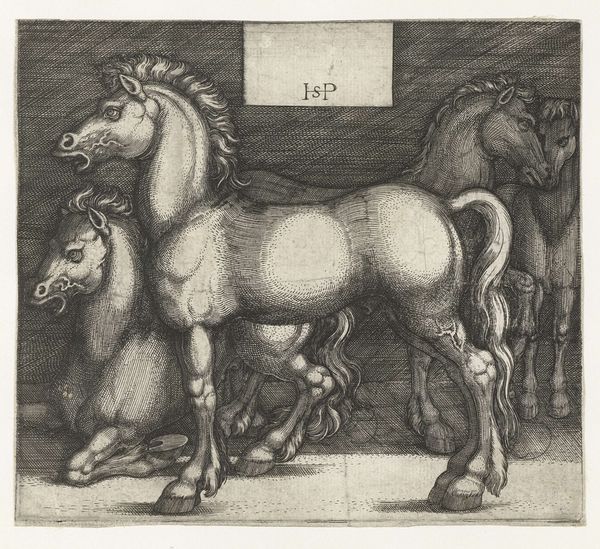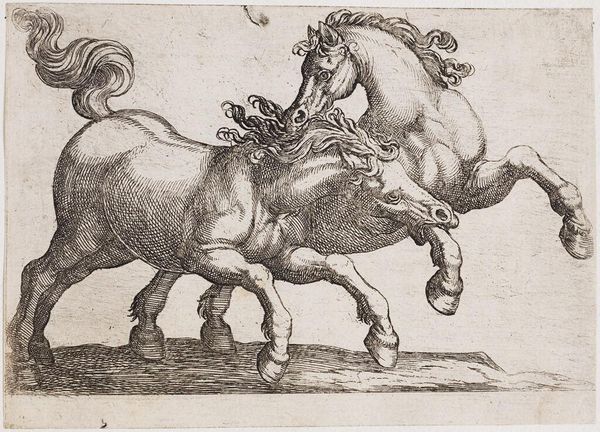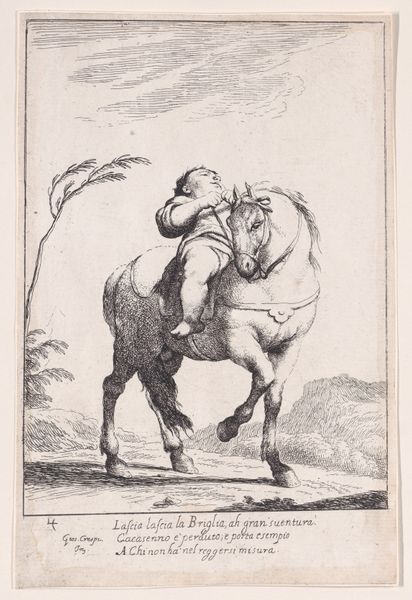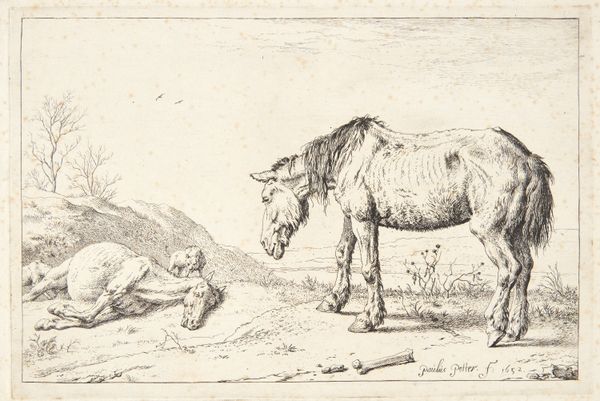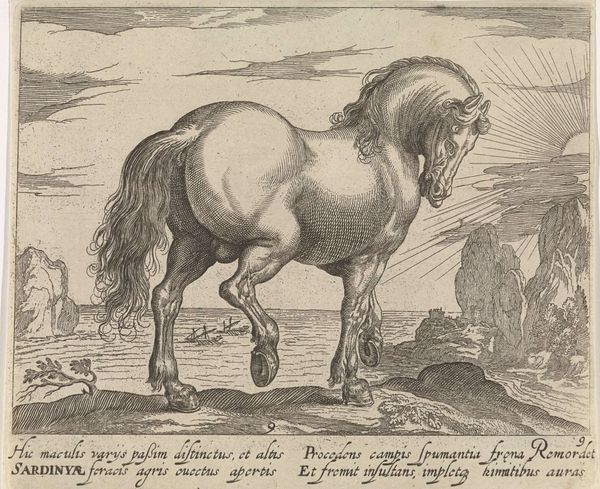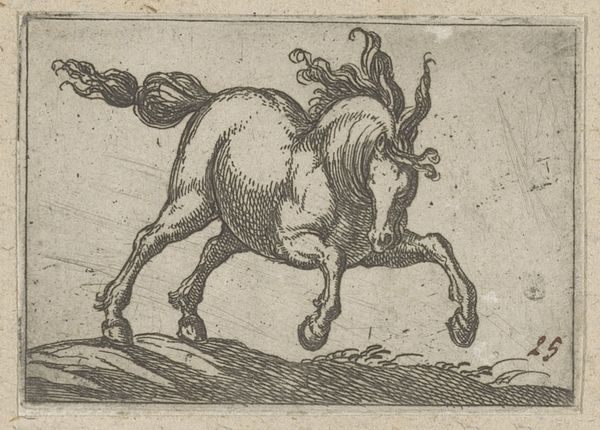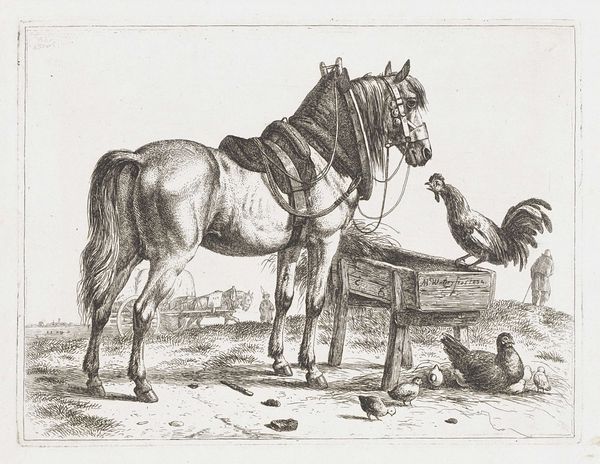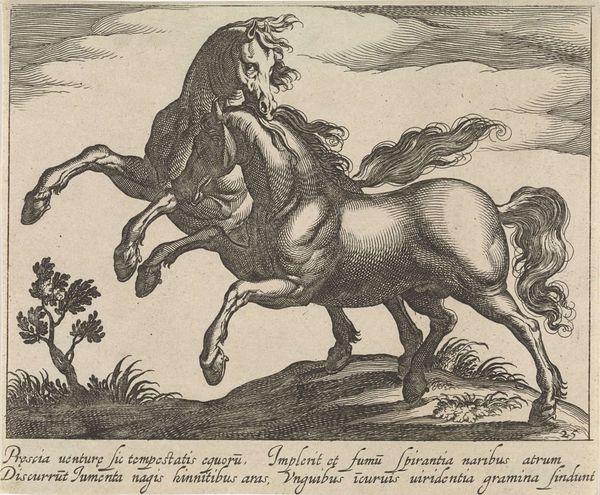
drawing, etching, engraving
#
drawing
#
baroque
#
animal
#
etching
#
horse
#
genre-painting
#
engraving
Dimensions: height 140 mm, width 204 mm
Copyright: Rijks Museum: Open Domain
Richard Gaywood made this print of two horses, one saddled, one not, sometime in the mid-17th century. It’s an etching, a medium that allowed for detailed line work and subtle tonal variations. Made in the Netherlands, the image speaks to the Dutch Republic's fascination with the natural world, but it also subtly reflects the social hierarchy of the time. The saddled horse, representing domestication and control, stands in contrast to its untamed counterpart. In this era, the Dutch Republic saw an increasing interest in equestrian culture, linking horses to nobility and military prowess. The print also hints at the emerging art market, where images of animals, like landscapes and still lifes, were becoming increasingly popular among a growing middle class eager to display their taste and affluence. To fully understand this print, scholars consult historical texts on equestrian practices, art market data, and social histories of the Dutch Republic, revealing how art is always embedded in its own time and place.
Comments
No comments
Be the first to comment and join the conversation on the ultimate creative platform.
